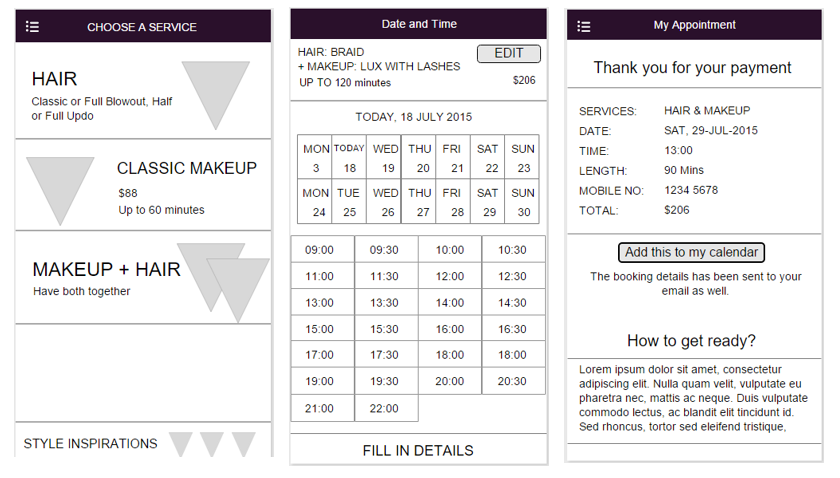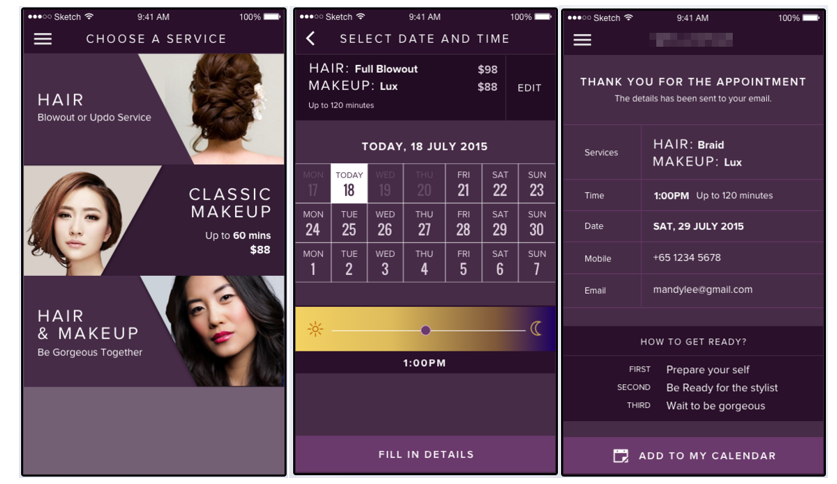Often, when meeting prospective clients for the first time, my first question to them is “Is this your first time developing a mobile app?”
If the answer is yes, I would switch to a different presentation deck to bring the prospect through the mobile app development process.
We would do this even if we know that the probability of closing that deal is low. We are not driven by sales.
Even if we do not eventually close the project, we want everyone we have met to be educated on what it takes to for proper mobile app developments, so that our prospects do not make costly mistakes later.
Originally US has no dedicated sales person; we are all motivated by things way beyond money. (Of course, money helps us continue to do what we love.)
At Originally US, Waterfall is the app development methodology most preferred by our clients. So let’s take a look at our mobile app development processes.
1. Scoping
This is the initial phase of the mobile app development where we work with you to figure out answers to a number of questions, including:
- Who is the app for?
- What can each group of users do in the app?
- What are the platforms (iOS/Android/etc) and form factors (Tablet/Mobile Phone/etc) required?
- When do you need it by?
If the prospect has a specific budget, we will also work with the prospect to maximize the functionality and feature set that can be delivered within the set budget. As we do not have any sales guy running on sales commissions, our willingness to help prospects save costs is not something that you can find elsewhere.
2. Prototyping/User Story
Lesser vendors generally skim on the Prototyping and Design process. However, Design and User Experience form the bulk of the mobile app experience. Furthermore, the Design and User Experience is often the reason why certain apps were able to take off while others failed.
A sure sign of a vendor who do not know their craft is one who will go into the app development process immediately after you sign the quotation. There is a very high chance that your mobile app will turn out looking very, very nasty. Then, they expect you to pay to fix it afterwards.
We do things differently at Originally US. At the prototyping stage, our UX designers first try to piece together a visual of your mobile app based on your requirements.
At this stage, we produce the wireframe of most, if not all, screens of your mobile app, so that there is a visual document between us and the client to base our discussions on.
At this stage, you should be able to visually review the user story of how your future users will move within the app. As these wireframes are low-fidelity, we constantly and quickly iterate this with you to come up with a wireframe that best communicates your vision of the mobile app.
3. Design

Once both parties are agreeable with the wireframe, we proceed to “paint the colours”. Our designers will translate the wireframe into high-fidelity mockups that look 99% identical to the actual app that we will develop.
If you have a style guide or colour preferences, our designers will do their best to follow that.
All high-fidelity mockups will be linked so that you can actually “tap” on different parts of the mockup to proceed to different screens.
We will iterate on the mockups until you are satisfied before we move on to the actual development phase.
4. App Development
This is the part where our expert developers will do the actual coding. Your mobile apps, content management systems, dashboards and other backend/server-related services are all built during this phase.

Typically, the backend/server portions are first built before we actually start work on the actual app. There are also cases when we actually start backend/server development before the design phase has completed, in the interest of time.
As soon as an initial amount of work has been completed for a mobile app, we will provide our clients a special page through which they can download the latest work-in-progress of their app. This is something we offer our clients free-of-charge. This work-in-progress is updated almost daily, sometimes even multiple times a day. This provides an unprecedented level of transparency in our work and progress that you barely find in other vendor-client relationships.
5. User Acceptance Tests
After our engineers and quality assurance team have done their proper diligence, we hand the apps over to you for further testing and verification.
At Originally US, the user acceptance test phase is typically quite short as clients would have already been playing with the work-in-progress apps since day one. Nothing should come as a surprise to our clients at this phase.
Once the client has signed off on the tests, we assist them in submitting their apps on the respective app stores.
6. App Store Submissions
If clients require our services for App store submissions, we will then proceed to prepare all necessary documents and graphic assets for App store submissions.
Submission to Apple’s App Store normally has up to 14 days of approval period before the app gets published. App submission to Google Play typically requires less than 12 hours before the app gets granted.
7. User Feedback & Maintenance
Users will inevitably have a different opinion of how your app should work. Your job at this phase would be to evaluate what your users are saying, and come up with a set of enhancements that can help your app better serve your users.
If you are on our maintenance programme, we actively look out for new iOS and Android releases and test for changes that could potentially break your app. Then, we will proceed to fix your apps so that they continue to function properly even with the latest version of the operating systems.
Interested to transform your ideas into award-winning mobile apps? Contact Singapore Mobile App Development house Originally US today!



